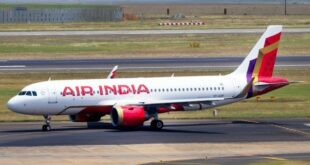
The cost of maize production in Ghana has surged from GH¢1,200 per acre in 2020 to GH¢8,100 per acre in 2024, raising significant concerns about food security as maize is a key staple in the country.
This increase represents a rise of over 500% in production costs. In the 2020/2021 season, the cost per acre was GH¢1,200, nearly doubling to GH¢2,153 in 2021/2022. The cost further escalated to GH¢5,513 in 2022/2023 and GH¢6,277 in 2023/2024, reaching GH¢8,100 this year. This sharp increase has forced many farmers to abandon maize cultivation.
With a projected yield of 12 bags per acre and a selling price of GH¢250, farmers would earn GH¢3,000 against a production cost of GH¢8,100, resulting in significant financial losses.
Elorm Goh, Executive Director of Agrisolve Ghana, highlighted these figures at the Graphic Business/Stanbic Bank Breakfast meeting, pointing out the economic disparity that disincentivizes farmers from investing in maize production.
Goh attributed the cost increase to rising prices of seeds, fertilizer, and land preparation. In 2021, seeds cost GH¢100 per acre, 50 kilos of NPK fertilizer cost GH¢252, and ploughing cost GH¢90. Currently, seeds are priced at GH¢1,100, fertilizer at GH¢2,820, and ploughing at GH¢250. The depreciation of the local currency and reliance on imported seeds and fertilizer have exacerbated these costs.
Additionally, Goh noted that adverse climate conditions further threaten maize production. Delayed rains have hindered land preparation and planting in the northern sector, typically starting in May and June.
Addressing the need for a comprehensive approach to agriculture, Goh emphasized the importance of local seed production and reducing dependency on imports to enhance the sector’s sustainability.
Kwesi Korboe, CEO of GIRSAL, also spoke at the meeting, linking high food inflation to the country’s reliance on imports. He highlighted that maize, a primary component of poultry feed, significantly impacts poultry production costs. To remain competitive, maize prices need to be managed effectively through increased productivity.
Korboe pointed out that while Ghana’s per capita chicken consumption is low at 13.7 kilos compared to 57.7 kilos in the USA, the country imports 83.09% of its poultry consumption, contributing to high food inflation. In contrast, imports constitute only 0.52% of poultry consumption in the USA and 0.21% in Brazil.
In conclusion, addressing the soaring costs of maize production and improving local agricultural practices are crucial steps to ensuring food security and economic stability in Ghana.
 GhArticles.com Every News in Detail
GhArticles.com Every News in Detail



